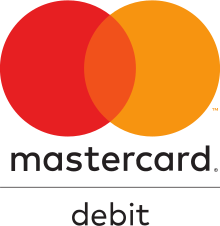Shopping For Legal Cannabis
6 Game Changing Moments in Cannabis History that Every Canadian Should Know
On October 17, 2018, Canada became the first G7 country in the world to legalize recreational cannabis, attracting the attention of governments, researchers and leaders from around the world

Outlawed as an illegal substance in Canada in 1923, the eventual legalization of cannabis came about through significant cultural shifts and pivotal moments in our country’s history.
Read on to learn about the historical firsts that collectively altered key government policies and spearheaded a new industry.
#1 The Gastown Riots marks the first pro-cannabis rally; the voice of the counter culture is heard.
Largely influenced by the hippie culture and new social movements, the 60s saw an ample surge in mainstream cannabis use. By the later part of the 60s and early 70s, criminal convictions were at an all-time high for cannabis users. On August 7, 1971 thousands of youth and cannabis-smoking protestors gathered at Maple Tree Square in Vancouver’s Gastown for a smoke-in to protest drug laws and recent drug raids. 79 protestors are arrested, and the event becomes the first pro-cannabis legalization rally in Canada.
#2 Terry Parker becomes the first Canadian to fight and win against prohibition laws-- changing cannabis legislation in Canada forever.
In 1987, Terry Parker, who suffers from epileptic seizures, is arrested for cannabis possession and later acquitted due to “medical necessity.” In 1996, he is arrested and charged again, this time for possession, cultivation and trafficking. Four years later in 2000, the Ontario Court of Appeal declares that prohibition laws infringe on Parker’s rights to “life, liberty and security” under the Canadian Charter of Rights and Freedoms, rendering cannabis laws unconstitutional.”

#3 Canada’s first medical cannabis laws grant patients the right to grow their own
In 2001, on the heels of Terry Parker’s win, The Marihuana Medical Access Regulations (MMAR) is established allowing licensed patients to grow cannabis at home or access it through Health Canada.
To learn more about the history of cannabis in Canada, click here.
#4 Justice Donald Taliano rules the MMAR is lawfully invalid; Canada’s first Licensed Producers are established.
In 2011, Ontario Superior Court Justice Donald Taliano rules the MMAR is lawfully invalid on the grounds that if a medical user cannot access cannabis legally, and therefore does so illegally, they can be criminally charged. As a result, the MMAR is replaced with the Marihuana for Medical Purposes Regulations (MMPR), which creates a new system of licensed cannabis producers for 37,800 Canadian medical patients.
Did you know?
The first federal attempt at cannabis decriminalization bill (C-38) was introduced in 2003.
#5 Cannabis activist Owen Smith is the first to challenge how cannabis can be produced, opening the door to edible products
In 2015, the Supreme Court of Canada reviews the 2009 case of cannabis activist and producer Owen Smith who was charged with possessing cannabis-infused cookies, massage oils, lozenges and lip balms. The court rules that restricting medical patient’s legal access to only dried cannabis flower violates their freedom of choice. This decision gives Licensed Producers the ability to produce cannabis in other formats and expands the definition of medical cannabis to include edibles.
On April 13, 2017, Bill C-45, the Cannabis Act, is introduced to Parliament which would legalize the possession, use, and cultivation and purchase of cannabis by adults 18 years of age and older.
#6 Canada becomes the first G7 Country in the world to legalize recreational cannabis.
The Cannabis Act goes into effect on October 17, 2018, allowing adults 18 years and older to legally possess 30 grams of dried flower (or the equivalent) in public. Each province and territory are granted the ability to set their own procedures to how cannabis is distributed and sold.

To learn more about the legal use of cannabis in Ontario, click here.







